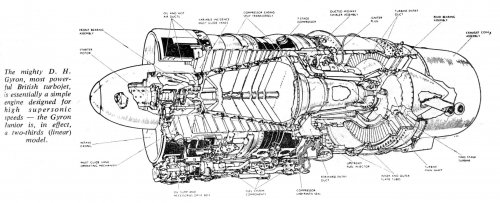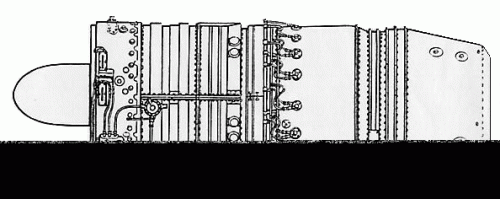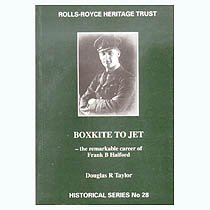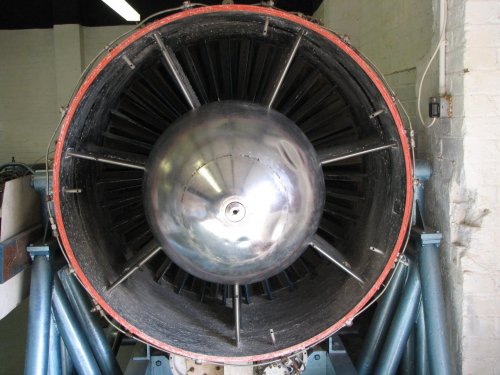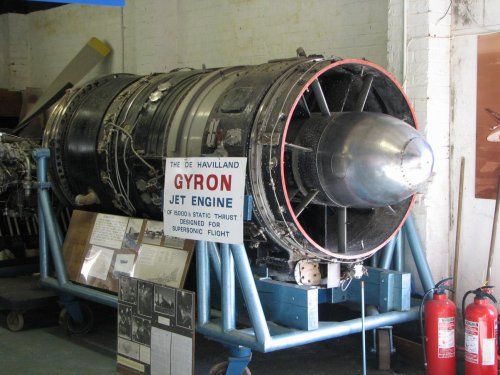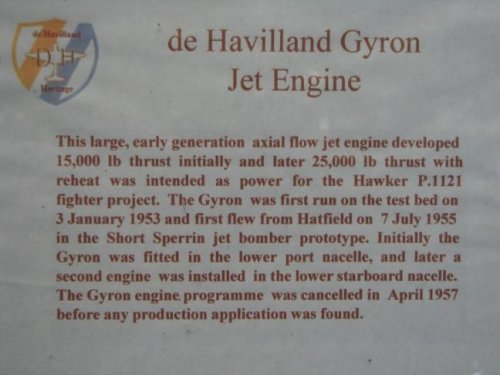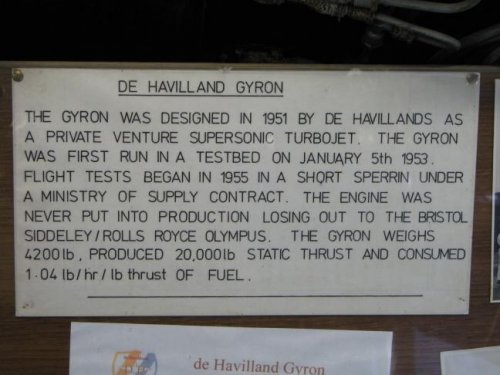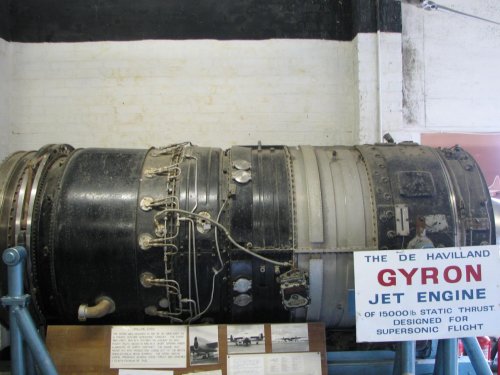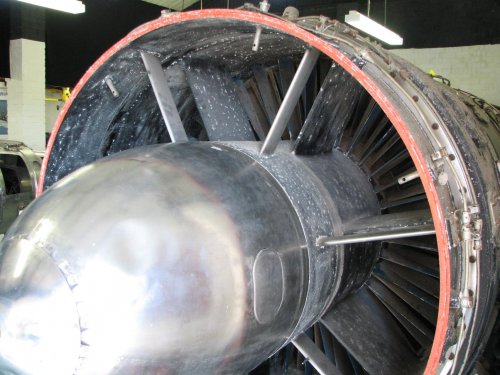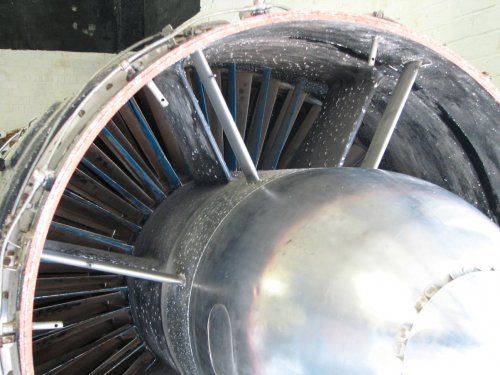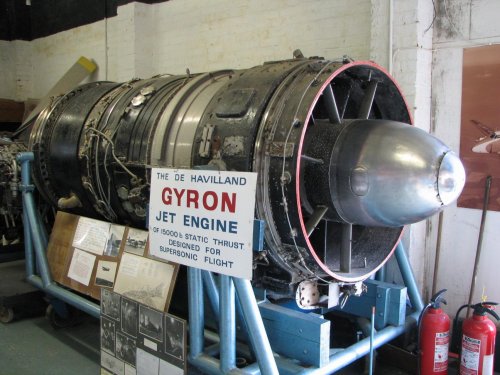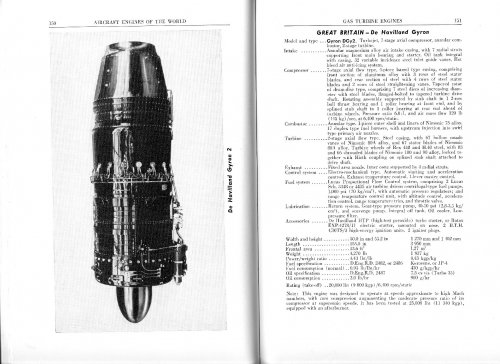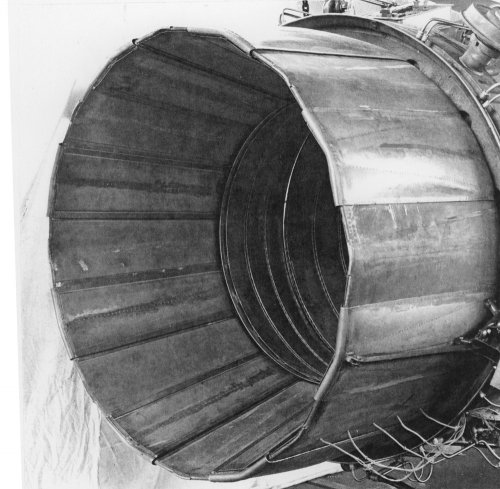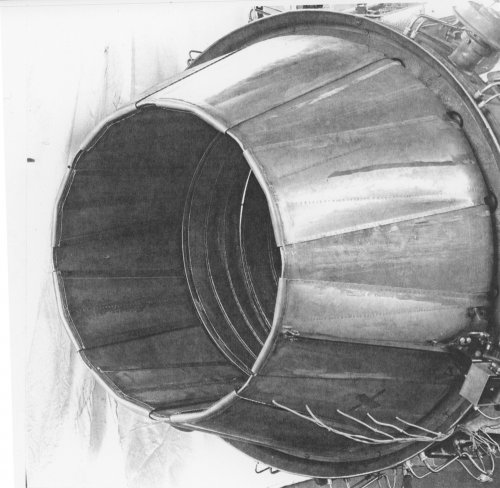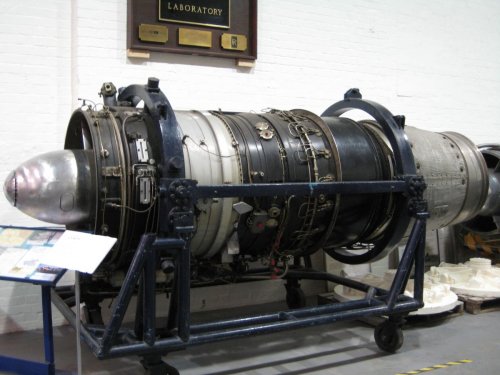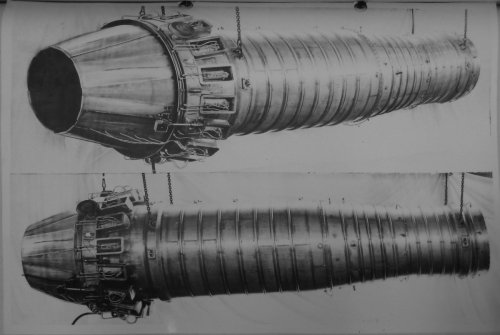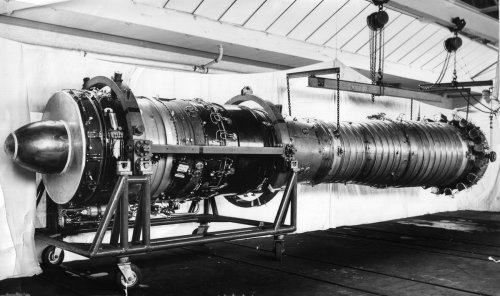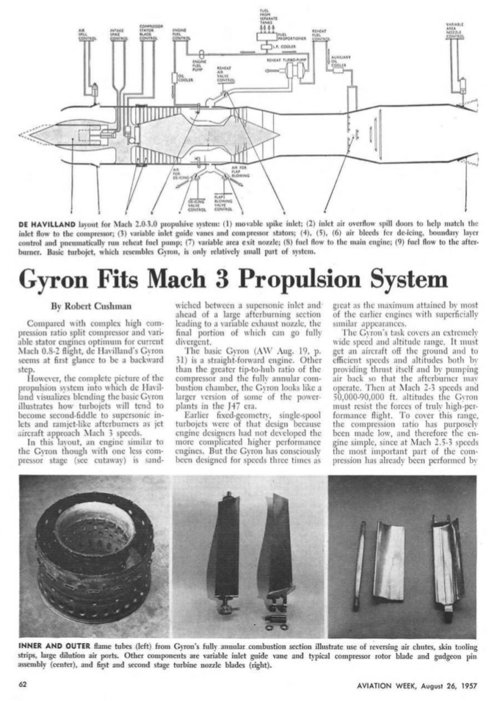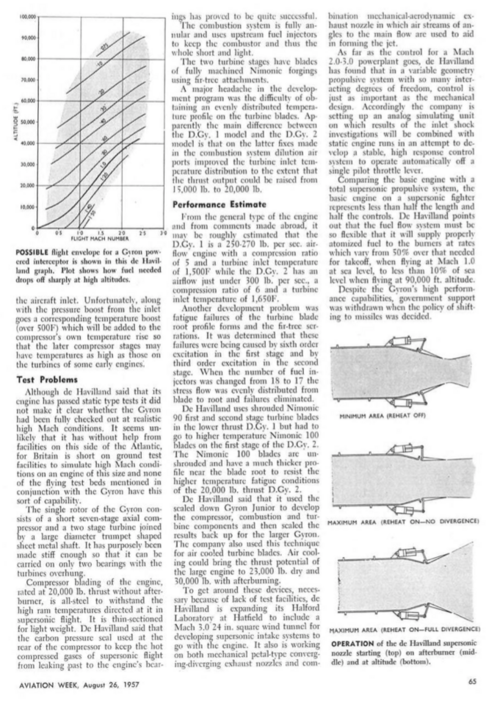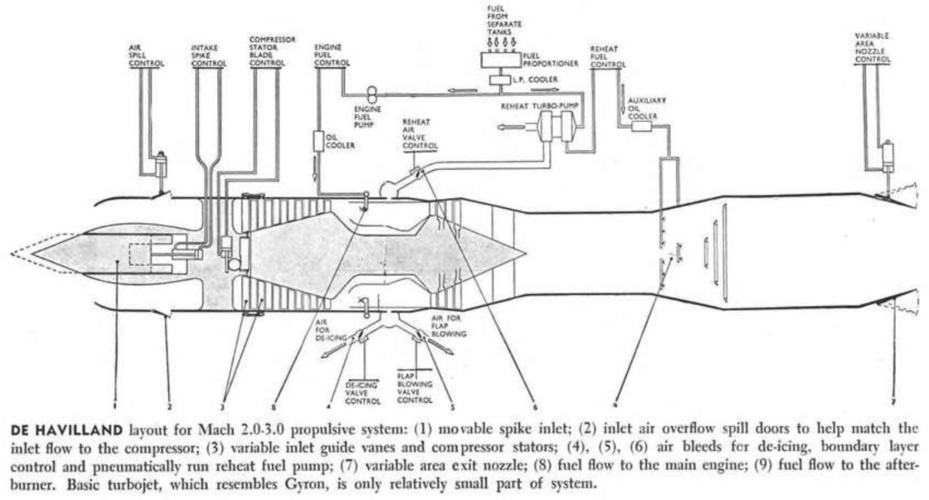- Joined
- 27 December 2005
- Messages
- 16,453
- Reaction score
- 19,143
An interesting engine design. Can anyone add some more info?
From Wikipaedia:
Variants, from www.skomer.u-net.com
From Wikipaedia:
De Havilland Gyron
The PS.23 or PS.52 Gyron, also known as the Halford H-4, was Frank Halford's last turbojet design while working for de Havilland. Intended to outpower any design then under construction, the Gyron was the most powerful engine of its era, producing 20,000 lbf "dry", and 27,000 lbf with afterburner ("reheat" in British terminology). The engine was actually too large for most roles and saw no production use. It was later scaled down to 45% of its original size to produce the de Havilland Gyron Junior, which was somewhat more successful.
The Gyron was Halford's first axial-flow design, a complete departure from his earlier centrifugal-flow engines based on Whittle-like designs, the Goblin (H-1) and Ghost (H-2). The Gyron was also one of the first engines designed specifically for supersonic flight.
The Gyron first ran in 1953. Flight testing started in 1955 on a specially modified Short Sperrin bomber, replacing the lower two Rolls-Royce Avons with the much larger Gyrons.
The Gyron was selected for a number of projects, most notably the Hawker P.1121 (sometimes referred to as the Hurricane) supersonic attack aircraft that was to have been the replacement for the Hawker Hunter. However, this project was eventually cancelled.
Variants, from www.skomer.u-net.com
PS.26
De Havilland H.4 Gyron turbojet
Intended for Hawker P.1121
Rated at 20000lb / 27000lb (88.9 / 120.1KN).
PS.48
De Havilland Gyron turbojet
Intended for OR.330 aircraft.
Rated at 18510lb (82.3KN).
PS.52
Development of De Havilland Gyron turbojet.
2 x intended for Saro P.187 interceptor to F.155 / OR.329.
Rated at 25000lb / 35000lb (111.2 / 155.7KN).
PS.55
Development of De Havilland Gyron turbojet.
2 x intended for Vickers / EE Type 571 to meet OR.343.
Rated at 25000lb / 35000lb (111.2 / 155.7KN).

